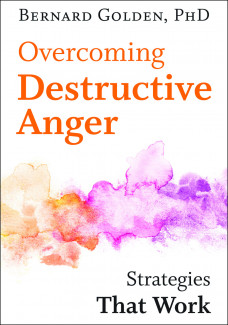
Johns Hopkins UniversityEst. 1876
America’s First Research University
My Pathway to Healthy Anger

As a therapist and anger management specialist, I have seen anger, in its many forms, destroy marriages, estrange family members, and derail careers. And all too often, I have observed how such anger hampers our efforts to identify and satisfy our core desires.
I believe I was drawn to my specialty because of the destructive anger I witnessed when growing up. As a child I was desperate to help my parents move past the rage that sapped their energy and blocked them from having more fulfilling lives.
My father lost his mother as young child, and his career as a comedian was cut short during World War II. My mother curtailed her ambition to become a dress designer. Each seemed to hold the other responsible for the pain they endured as a result of these losses. Clinging to anger interfered with the ability to successfully mourn their unfulfilled dreams and move forward.
Their bickering and resentment, reflected by raised voices and looks of disgust, gave a sepia tone to what could have been a more joyful childhood, and frequently cast a shadow on many family activities. As a child observing their anguish, I felt a responsibility to help them overcome it. While I knew it was not my job to do so, I sometimes felt otherwise. As a result, I often felt anxious, sad, powerless and angry. Increasingly, I just wanted to flee.
My own therapy as an adult ultimately helped me to experience more appropriate compassion for my parents and let go of my unrealistic hopes for them. It helped me accept that it was not my role to “fix” them, even though I so strongly yearned to. And therapy taught me to be compassionate with myself and acknowledge my childhood wounds.
Growing up a witness to my parents’ hostility and the pain it left in its wake, led me to devote my life to teaching people how to cultivate “healthy anger,” anger that is rooted in compassion for oneself and others. My work is based on the conviction that all anger is a reaction to and distraction from some form of inner pain. When we manage our pain constructively, we express “healthy anger”. But when our self-compassion goes awry, we express destructive anger.
Practicing “healthy anger” improves all aspects of life, from our relationships with others at work and in our personal lives to the relationship we have with ourselves. Most significantly, “healthy anger” expands self-awareness, harnesses our energy and empowers us to live a more fulfilling life.
At its core, “healthy anger” consists of:
- Observing and experiencing anger without being overwhelmed by or reacting to it
- Recognizing our anger as a signal to direct our attention inward, to explore the feelings, thoughts, and bodily sensations that precede it, as well as core desires behind it.
- Identifying unrealistic expectations that can make us vulnerable to anger
- Developing self-compassion, which includes skills to enhance our sense of safety and connection, and acceptance of our humanity
- Developing strategies to let go of anger.
In my book, Overcoming Destructive Anger, I explore the cultivation of “healthy anger” through a unique model for gaining self-awareness, practices in mindfulness and meditation, compassion focused skills, emotional intelligence, and cognitive behavioral techniques.
Bernard Golden, PhD, the founder of Anger Management Education, has been a practicing psychologist for almost 40 years. He is the author of Healthy Anger: How to Help Children and Teens Manage Their Anger and Unlock Your Creative Genius. His latest book, Overcoming Destructive Anger, is available now.



